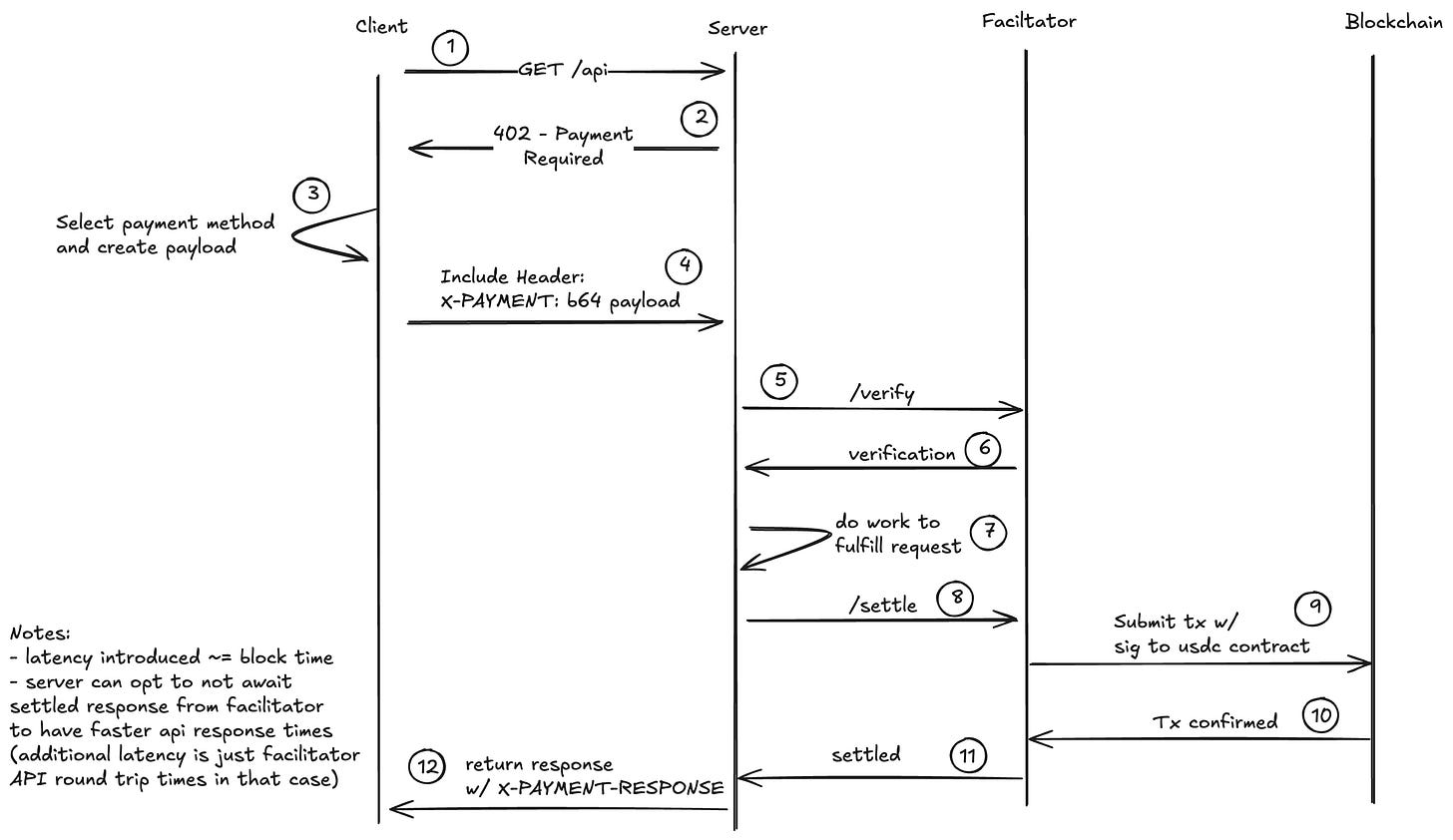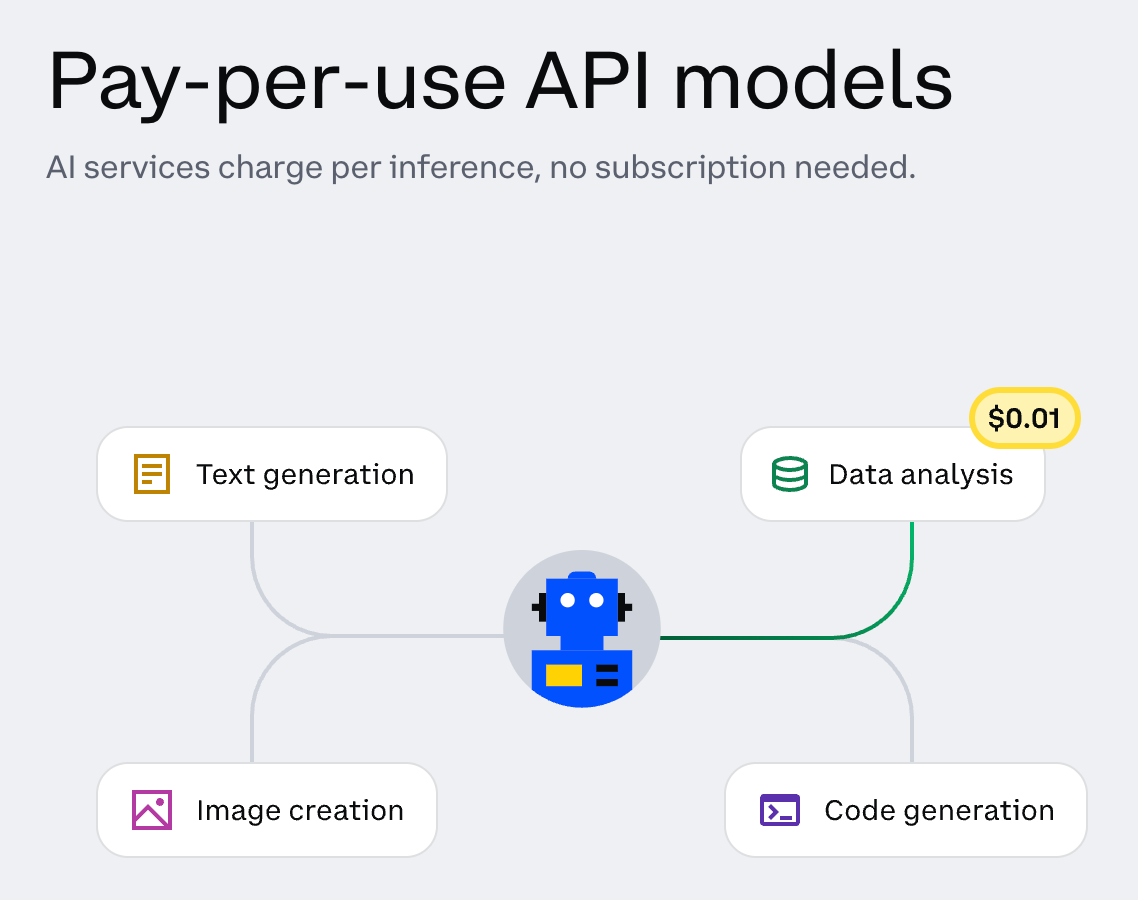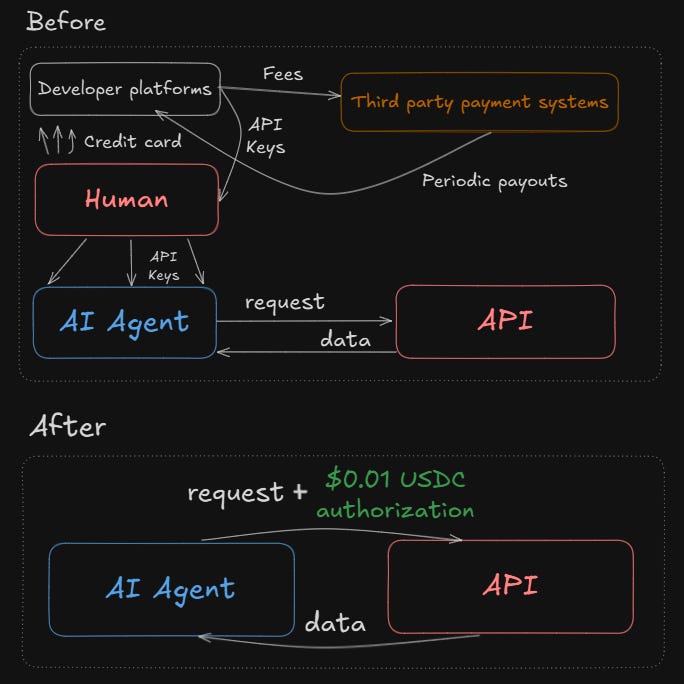Deep Dive: Is x402 Payments Protocol the Stripe for AI Agents?
“Remember when your browser said 404 Not Found? Well, now it might just say 402 – Payment Required.” This tongue-in-cheek greeting belies a serious development: x402, Coinbase’s new open payment protocol, injects native stablecoin payments directly into web traffic. It’s as if every HTTP request could carry a paywall of its own – one that AI agents and browsers could clear automatically. The crypto Twitterverse went wild (and wallets got itchy) when x402 launched, but beyond the meme coins and market caps lies a technically intriguing, and potentially transformative, vision for internet commerce. In this deep dive we’ll pry open x402’s guts, survey who’s trying it (and why), and sift the hype from the hard data. Buckle up – we’re about to pay attention to HTTP 402.
How x402 Payments Protocol Works
Let’s spell out the x402 handshake in a nutshell (this is where a flowchart could help readers visualize the process, showing the HTTP request, the 402 response, the signed payment header, and the final fulfillment):
Client Request: A buyer (human app or AI agent) sends an HTTP request to a protected endpoint (e.g. GET /api/data).
402 Response: The server wants payment, so it replies 402 Payment Required and includes a JSON body with payment details – typically price (e.g. “0.01 USDC”), acceptable tokens, and a recipient address or invoice for the payment.
Client Pays: The client parses the 402 response and uses its wallet to create a signed payment payload (a cryptographic authorization for the specified token transfer).
Resubmit with X-PAYMENT: The client re-sends the original HTTP request, this time including an X-PAYMENT header containing the signed payload.
Verify & Settle: The server checks the payment. It can verify the signature itself or (more commonly) send it to the facilitator. The facilitator confirms the payload meets the requirements and then broadcasts the stablecoin transaction on-chain (e.g. USDC on Base).
Confirmation: Once the blockchain confirms the transaction, the facilitator informs the server. The server then completes the response.
200 OK with Content: The server responds with 200 OK. The requested resource (API result, webpage, dataset, etc.) appears in the body, and an X-PAYMENT-RESPONSE header provides the transaction confirmation details to the client.
Done: The client has obtained the data and the server has collected payment – all within a single programmatic flow.
This flow makes web payments feel like an extra header in an API call. It’s remarkably efficient: one round-trip that covers inquiry, payment, and final data delivery. As Coinbase notes, x402 is deliberately “stateless,” “HTTP-native,” and “developer-friendly”. No new session protocols or login screens are needed; any standard HTTP library can implement it.
In practice, developers unlock this with just a few lines of code. Vercel, for instance, introduced an x402-next middleware to protect API routes with paywalls, and an x402-fetch wrapper for clients. In a Vercel blog post, engineers emphasize: “Unlike vendor-specific payment APIs, x402 is designed as an open web protocol… It is not tied to any centralized payment provider and can support different payment networks or schemes.”. Likewise, Circle Labs built a demo where an AI agent autonomously pays $0.01 USDC to retrieve a blockchain risk report, all via x402 calls.
“The agent didn’t need to pre-register an account or ask a human to complete a purchase. Payment is part of the conversation.” – from Circle’s x402 tutorial.
In short, x402 adds payment logic under the hood of web APIs. It’s a bit like having a built-in payments checkbox that only a machine can see – pay the toll automatically and get through.
Micropayments, AI Agents, and the “On-Demand Internet”
What can you build once the web itself can charge for data or services per click? The early visionaries and partners are exploring many scenarios:
Pay-per-API / Pay-per-Request: APIs can monetize every call individually. Instead of subscriptions or API keys, developers simply tag endpoints as paid. Clients (or their agents) pay for each request. This unlocks micropayments: charging a cent for a news article, a stock quote, or an image transformation.
Content creators could automatically earn stablecoins every time someone accesses their premium content. Coinbase’s launch blog imagines “creators getting automatically compensated per minute viewed” and “news sites monetizing individual articles” via x402.
AI Agent Commerce: This is x402’s flagship scenario. Autonomous agents (in chatbots, assistants, IoT) can now pay for compute, data, and cloud resources on the fly. For example, an AI model can pay for GPU cycles per second without
human intervention. OpenAI’s Agent GPT or other LLMs could autonomously







